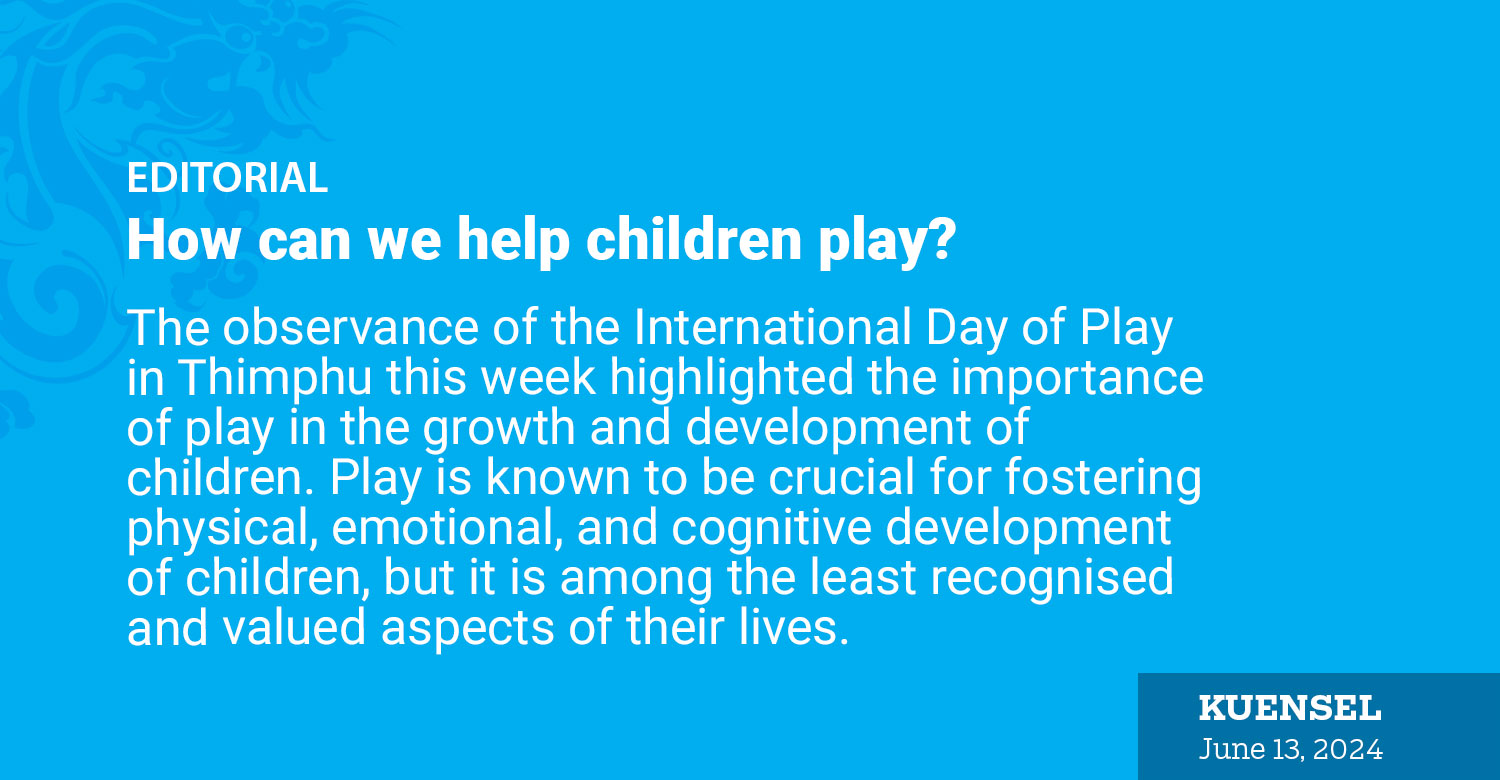The observance of the International Day of Play in Thimphu this week highlighted the importance of play in the growth and development of children. Play is known to be crucial for fostering physical, emotional, and cognitive development of children, but it is among the least recognised and valued aspects of their lives.
International data show that four in 10 children aged between two and four years do not get enough ‘responsive interaction’ or ‘stimulation’ at home, which, in layman’s terms, means inadequate playtime. Moreover, one in five children aged between two and four years do not play with their caregivers at home. Play is undervalued. Even trivialised.
These data are particularly relevant to Bhutan’s context. Our obsession with academic performance in schools leaves little time for play, especially when schools are ranked based on academic performance. Our focus on academic performance is so strong that homework takes up all playtime before and after school. Therefore, when children fail academically, they are deprived of other vital dimensions of life, such as health and social skills.
To begin with, dedicating one period in a week to health and physical education in schools is hardly enough if play were to become an integral part of children’s education. Experts say play stimulates the development of essential skills in a child, such as creativity, problem-solving, negotiation, and cooperation. These skills are best played out, so to say, rather than taught.
However, the lack of adequate facilities leaves little room for play. Schools, where children spend most of their time, have playgrounds with a few balls, but children hardly have time for play. After school and on weekends, playgrounds remain locked up. Outside schools, playgrounds and facilities are all operated by business people. The precious few public parks with play facilities for children, built and operated by government agencies, are all intended to generate revenue. Therefore, it is not surprising to find some children with balls on the roads.
To make things worse, our children are getting increasingly hooked to electronic gadgets. The challenge before us is to build free play facilities attractive enough to draw them away from electronic gadgets. Not the ones that operate as businesses. It will take public resources. More than that, it will take the will and commitment of policymakers. After all, the cost of a few high-end Toyota cars can build and operate a few good play facilities.
The good news amid such challenges is that we acknowledge the importance of play and recognise the challenges. It is a good start, but a few things need to be straightened to sustain the momentum. The pen may be mighty, but the hand that holds the pen needs to be strong. Not all public facilities, including parks and playgrounds, need to be there to bring cash. They can be there to bring health, wellbeing, social cohesion, and community vitality, which are more enduring than cash. Resources can be scarce, but we can always prioritise where we use them. If children are indeed the future of the nation, there is no priority bigger than them.


